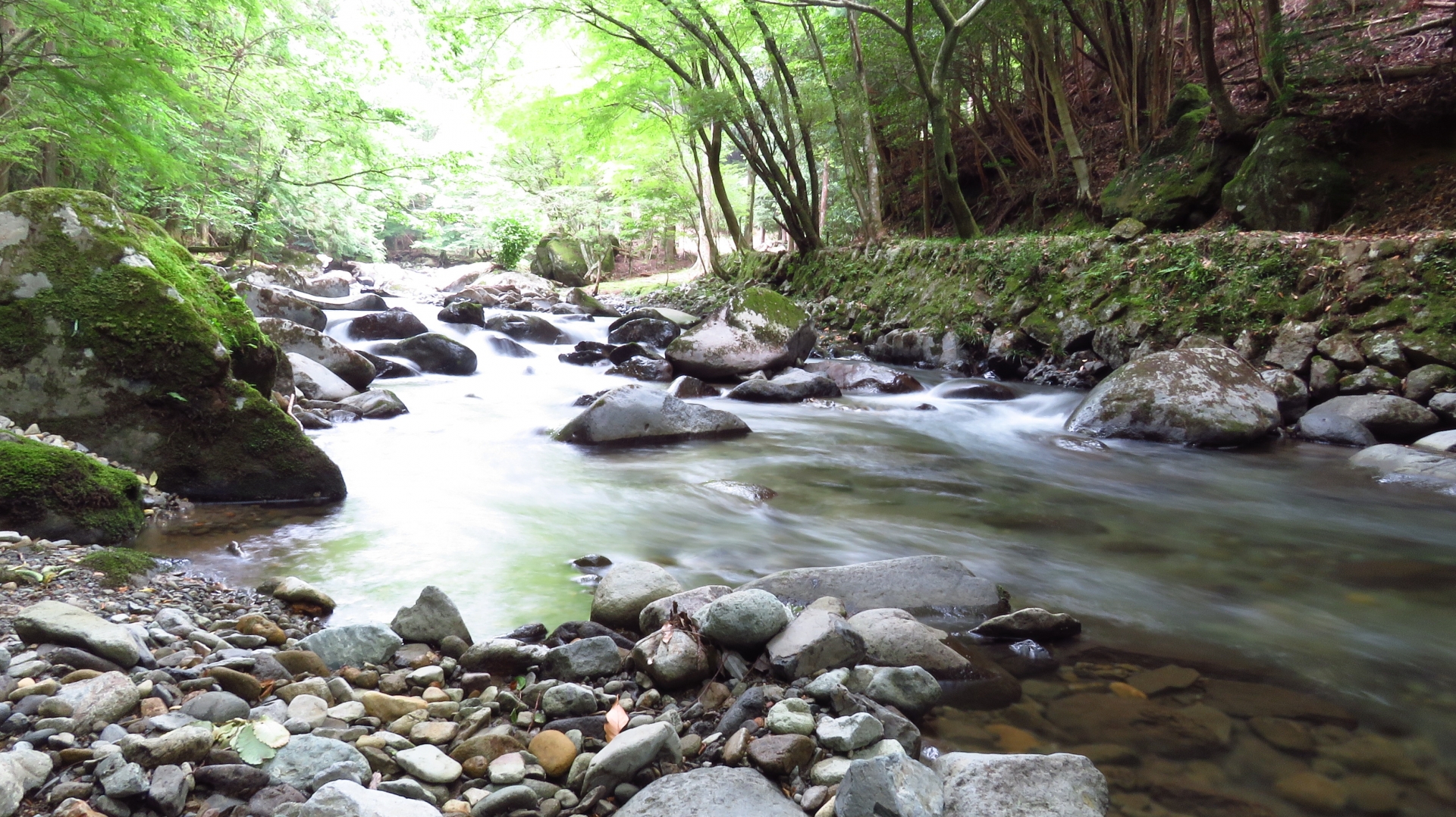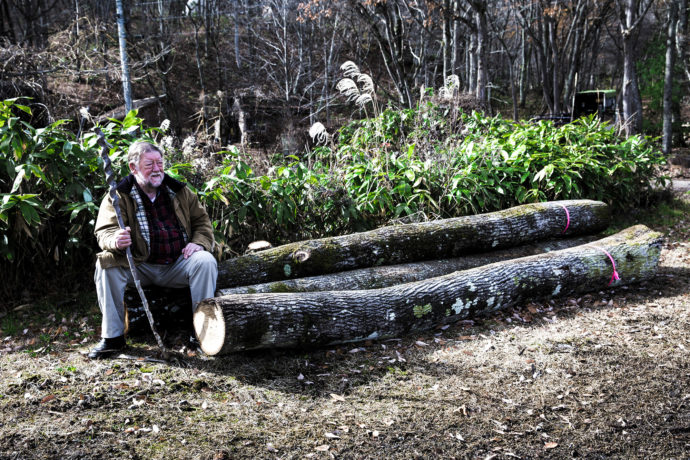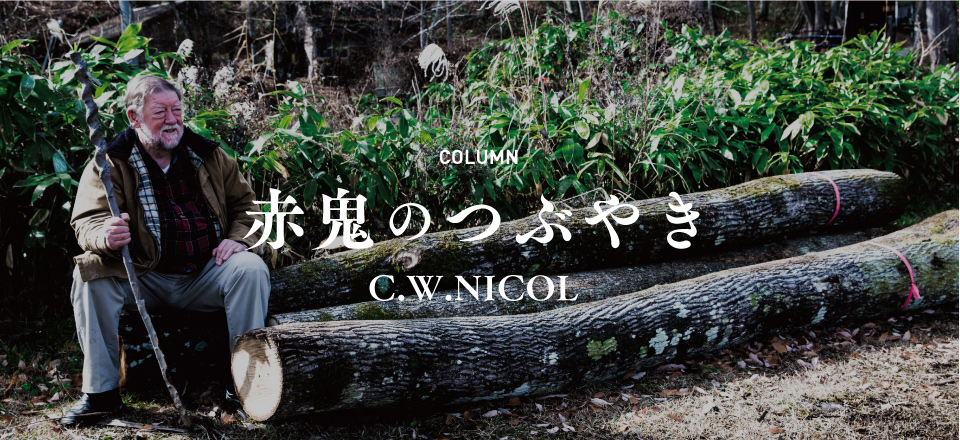Column
【赤鬼のつぶやき C.W.ニコル】ネムノキ(ミモザ、Persian Silk Tree)
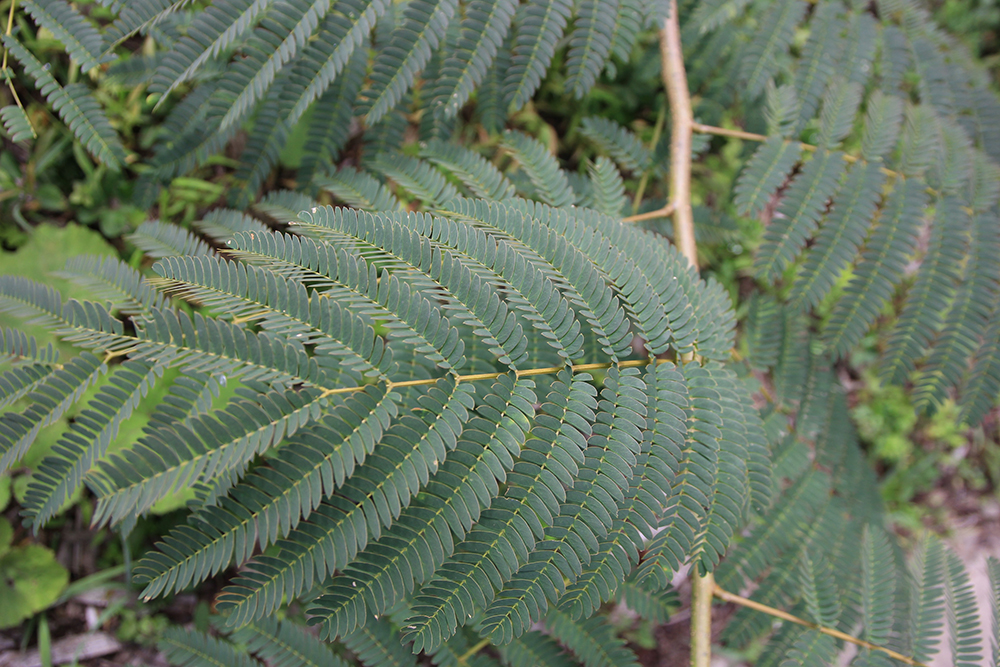
わたしたちは1986年に森づくりを開始し、最初にブナとトチノキの苗木を森に植えました。後になってこれらの木々は除去されてしまいましたが、森の地面を掘ったときにその木の実が発見されたことからわかるように、この森にもかつては古いブナやセイヨウトチノキが自生していたはずです。また、遊び半分、かつ教育的な目的のために、イングリッシュオーク、アメリカンレッドオーク、メタセコイア、レバノンスギなど、日本が原産ではない木もすこしだけ植えたことがあります。そして自分たちの手で掘った池の周りに、ヤマザクラと一緒に植えたのが数本のネムノキでした。将来この森を守る人はきっと、このネムノキのことでわたしたちを呪うでしょう。

ネムノキ(ミモザ、Persian silk treeとも呼ばれます)の種は多いですが、その多ほとんどがイラン、中国北部や韓国が原産です。背の低い広葉樹で、5〜15メートルの高さに成長します。幹は暗い緑のかかったグレーで、成長すると縞模様があらわれてきます。そして親戚のニセアカシアとそっくりの、平らな茶色い鞘に入った種を付けます。この実が空中の窒素を固定して、地面に戻していくのです。

ネムノキの材が薪など暮らしの役に立つのかどうははっきりとわかりませんが、葉を乾燥させると漢方薬として用いられると読んだことがあります。煎じたお茶には、空気をととのえ咳を和らげ、歯の痛みを楽にする効果があります。ヨーロッパでは広く植えられており(アジアからヨーロッパへ持ち込まれたのは二百五十年ほど前のことです)、アメリカ、オーストラリア、ニュージーランドや他の国でも街路樹として用いられています。成長が早く、よい芳香を放ち、かわいらしい花はまだら模様の優しい木陰を作り出します。
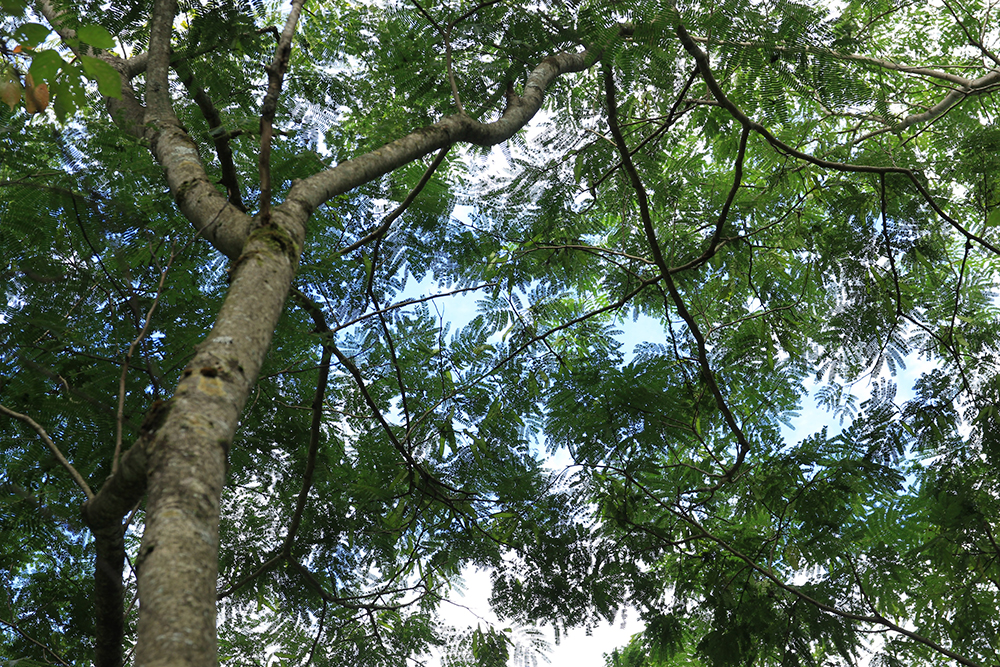
でも、この木はますます侵略的外来種としての知名度が上がりつつあります。鞘に入った種子だけでなく、根でも広まってゆくからです。わたしたちが2002年に財団として法人化して以来、日本の木以外は森に植えていません。それまでは、木を植えたとしても、万が一問題を起こしたら伐ってしまえば良いという姿勢でいました。アファンの森にあるネムノキは国内に自生する耐寒性の強い種ですが、やはり増殖しやすいのは変わりません。ネムノキも、いつか森の管理のためにいくらかは伐られてしまうでしょう。でもそれまでしばらくは、その愛らしい花でわたしたちの目を楽しませてくれそうです。
C.W.ニコル
2018年8月
写真提供:C.W.ニコル・アファンの森財団
NEMU NO KI – MIMOSA
We started tending our woods in 1986. One of the most important things we did was to plant beech and horse chestnut seedlings. These trees had been wiped out, but we knew they were native because when we dug holes we found old beech and horse chestnut mast. For our own fun, but also for education, we also planted a few trees of non-native species, such as English oak, American red oak, metasequoia and Lebanon cedar. A few mimosas were planted along with mountain cherry around the two ponds that we dug. Future foresters might curse us for this.
There are many species of mimosa (also called ‘Persian silk tree) many of them native to Iran, northern China and Korea. The one we have in our woods is native to Japan. It is a small, deciduous tree growing five to fifteen metres tall. Its leaves have twenty to thirty paired leaflets that slowly close during the night. That’s probably why it’s called ‘sleeping tree’ in Japanese. When it rains the leaflets point downwards. The flowers are fragrant clusters of little pink flowerets with white, silk threads. These flowers attract bees and butterflies, and, apparently humming birds. (No humming birds in our woods though.)
The bark is a dark, greenish-grey that gets stripy when old.This tree, like its cousin the false acacia, has seeds in brown, flat pods. It takes nitrogen from the air and returns it to the earth.
I don’t know if mimosa wood is used for firewood or anything else, but I have read that the leaves are traditionally dried and used for tea in Chinese medicine. This tea is apparently a mood enhancer and can relieve coughs, tooth pain and so on.
It is widely planted in Europe (where it was first introduced from Asia two hundred and fifty years ago), also in America, Australia, New Zealand and many other countries as an ornamental tree, because it is fast-growing, fragrant, has lovely flowers and gives a gentle, dappled shade.
However, more and more it is becoming to be regarded as an invasive plant. It spreads not only from the seedpods. Some related species of mimosa also spread from the roots, like false acacia.
We have not planted any more non-native trees since we became a trust in 2002. Prior to that we had the attitude that if a tree should become a problem we could always cut it down. With mimosa future foresters might have to do quite a bit of cutting, but in the meantime we enjoy their lovely flowers.
C.W.Nicol August 2018
C.W.ニコル
作家・1940年イギリス南ウェールズ生まれ。1995年日本国籍取得。カナダ水産調査局北極生物研究所の技官・環境局の環境問題緊急対策官やエチオピアのシミエン山岳国立公園の公園長など世界各地で環境保護活動を行い、1980年から長野県在住。1984年から荒れ果てた里山を購入し「アファンの森」と名づけ、森の再生活動を始める。2005年、その活動が認められエリザベス女王から名誉大英勲章を賜る。2011年、2016年に天皇、皇后両陛下がアファンの森をご視察された。



